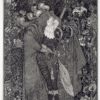
Sasha Dovzhyk, “The Queer Little Grove: The Adoption of Aubrey Beardsley by Mikhail Kuzmin”
This article explores one of the many aspects of Aubrey Beardsley’s (1872–1898) transnational legacy, focusing on his appropriation by Mikhail Kuzmin (1872–1936), a key modernist writer and a seminal voice of the emerging homosexual subculture in Russia. While Kuzmin often used Beardsley as a signifier of homoeroticism in his literary works and life-writing, it is in his play Little Grove (1922) that the queering of Beardsley is crystallized. My intermedial analysis of the piece will show how allusions to Beardsley shape Kuzmin’s representation of gender and sexuality and how the formal construction of Kuzmin’s publication echoes the formal features of Beardsley’s graphic designs.
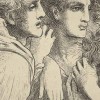
Anna Maria Jones, “On the Publication of Dark Blue, 1871-73″
Dark Blue (1871–73) was a monthly magazine, edited by Oxford undergraduate John Christian Freund, which folded two years after a brilliant debut. During its brief run, it brought together a stunning list of literary and artistic contributors, including Dante Gabriel Rossetti, A. C. Swinburne, William Morris, Andrew Lang, Mathilde Blind, Sheridan Le Fanu, Simeon Solomon, and Ford Madox Brown, who produced aesthetically and sexually daring poetry, art, and criticism. However, it also strove to “appeal to the whole English-speaking public,” as Freund put it, and, thus, included much that might be described as middlebrow, even conservative. Whereas individual texts from Dark Blue, such as Le Fanu’s Carmilla, have received considerable attention, scholars have devoted very little sustained attention to the journal beyond noting its importance as an “artifact” in the history of the Pre-Raphaelite Movement and British aestheticism, and registering puzzlement at the journal’s eclecticism. This essay returns to Dark Blue to uncover common threads among dissimilar writers and artists. With particular attention to the journal’s commitments to transnationalism, I trace three intertwined threads—synesthesia, translation, and sexual dissidence—as they manifest in key texts by Swinburne, Solomon, Le Fanu, and others. Reading these texts in their original context not only demonstrates Dark Blue’s importance to early formations of aestheticism but also helps us to see how aestheticism connects with, rather than stands in opposition to, mid-Victorian culture.
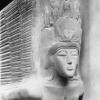
Ellen Crowell, “Oscar Wilde’s Tomb: Silence and the Aesthetics of Queer Memorial”
This entry looks at how, in the aftermath of Oscar Wilde’s death, those individuals closest to the writer sought a suitable funerary monument in memorial. I first explore the interpersonal and aesthetic politics that informed the choice of Jacob Epstein as the tomb’s commissioned sculptor, and how that choice must be understood as integral to how we remember Wilde today. Noting how profoundly the aesthetics of funerary sculpture are in dialogue with both literary and queer history, this essay also briefly imagines how an alternate monument adorning Wilde’s tomb might have differently configured that dialogue. By comparing Epstein’s tomb with the radically different aesthetics that guide a “rejected” design, this one by the writer’s close artistic collaborator and friend Charles Ricketts, this essay considers how aesthetics have shaped twentieth and twenty-first century approaches to queer memory, mourning, and modernity.
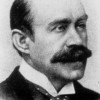
Rachel Teukolsky, “Walter Pater’s Renaissance (1873) and the British Aesthetic Movement”
Walter Pater’s Studies in the History of the Renaissance is known as the “golden book” of the British Aesthetic movement. Though ostensibly focused on Italian Renaissance art, the book speaks obliquely to Pater’s own Victorian moment, challenging conventional codes of religion, morality, sexuality, and scholarship. This essay surveys Pater’s diverse methods of quiet rebellion, including his ironic treatment of critical and scholarly norms. The essay’s second part considers the relation of The Renaissance to the emergence of popular aestheticism in the later 1870s.
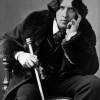
Andrew Elfenbein, “On the Trials of Oscar Wilde: Myths and Realities”
This essay contradicts myths often found in popular writing about Oscar Wilde: (1) Wilde was an aristocrat; (2) Victorians knew nothing about homosexuality; (3) Wilde was put on trial for being a homosexual; (4) once Wilde was on trial, his conviction was inevitable; and (5) after the trials, Wilde disappeared. It concludes by speculating on future directions for work on Wilde and sexuality.
